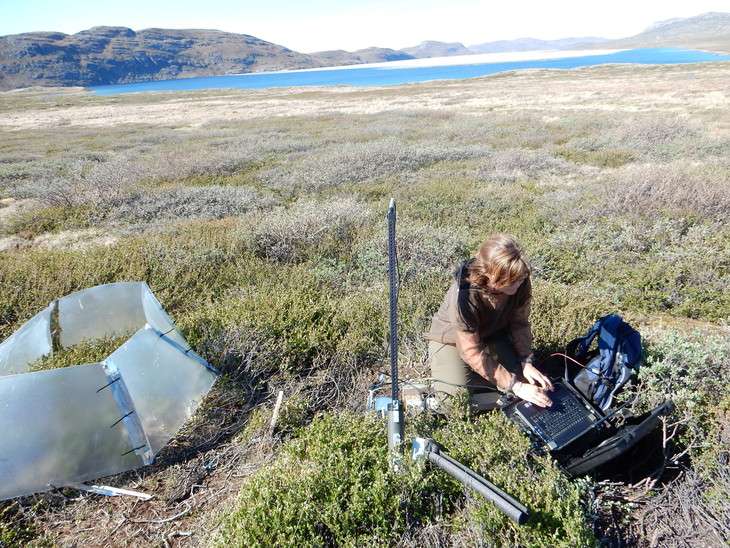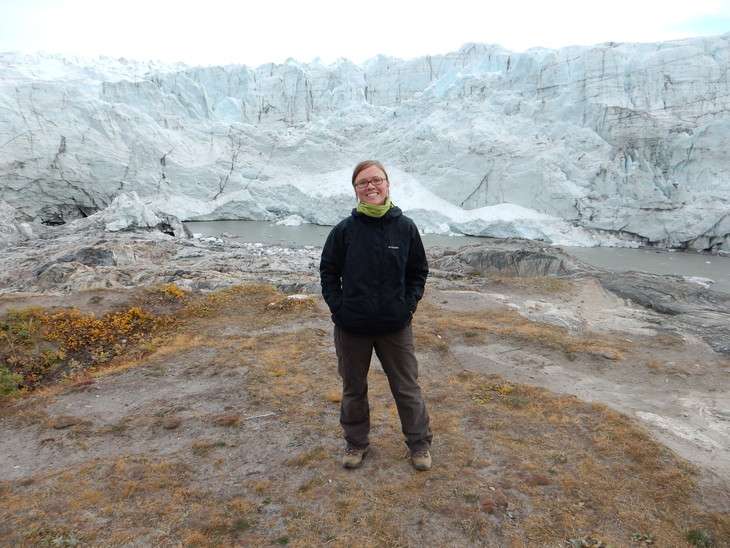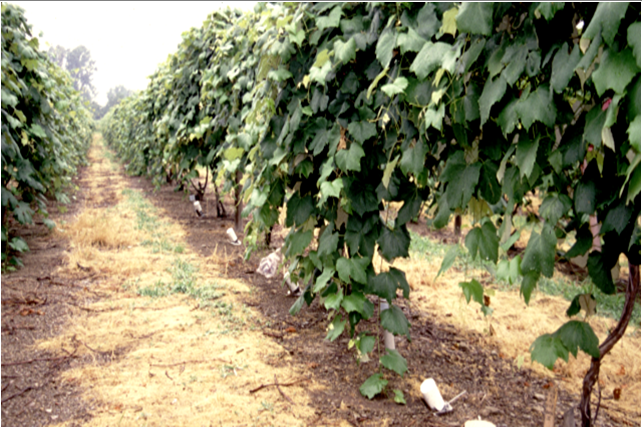Research suggests climate change affecting plants above ground more than below

It's a long way between central Pennsylvania and Greenland—at least 2,000 miles—but Laura Radville came to Penn State so she could study climate change in the "Iceberg capital of the world."
However, the research conducted in Greenland by the Boston native did not deal with ice at all, but rather plants—arctic shrubs to be specific. Her work focused on how rising air temperatures are affecting the growth of leaves and stems much more than the growth of roots, perhaps "uncoupling" aboveground and belowground plant development, or phenology.
"The College of Agricultural Sciences at Penn State has been sending faculty and students to Greenland to conduct research for years, and I wanted to go to study climate change because it's a huge issue," said Radville, a doctoral candidate in ecology. "This was an especially cool project because I got to go onto the tundra."
Shifts in plant-growth patterns have been widely reported in response to global warming, and it is well documented that warming generally advances aboveground plant growth, noted Radville, who is advised by David Eissenstat, professor of woody plant physiology. But warming's influence on root phenology is unclear.
Most terrestrial biosphere models assume that root and shoot growth occur at the same time and are influenced by warming in the same manner, but recent studies suggest that this is not the case. Testing this assumption is particularly important in the Arctic, Radville pointed out, where more than 70 percent of plant biomass can be belowground and warming is happening faster than in other ecosystems.

In a paper published in Climate Change Responses early this year, Radville reported that peak root growth occurred two and a half weeks before leaf growth on the tundra in Greenland, suggesting that spring root phenology is not controlled by carbon produced during spring photosynthesis. This may uncouple spring root phenology from spring shoot phenology.
Consistent with such uncoupling, spring leaf growth was advanced by warming and delayed by herbivory by migrating caribou, but neither influence significantly affected root phenology. Root growth was not driven by soil temperature and occurred in near-freezing temperatures above the permafrost. In addition, summer root production appeared to be linked to soil moisture.
More recently Radville, who earned a bachelor's degree in biology at the College of the Holy Cross in Massachusetts and a master's degree in biology at the University of Rhode Island, found a similar disconnect between the growth of roots and the growth of leaves and stems in grape plants in two widely separated regions. In a research paper published this month in the American Journal of Botany, she reported that a multiple-year analysis showed that aboveground grape phenology responds differently than belowground phenology to changes in air temperature.
"Global warming may further uncouple the timing of aboveground and belowground growth, and that's important to understand because, for example, grape growers need to know when to put down water and nutrients as roots are growing," she said. "But you can't really gauge root growth based on when leaves are growing. And climate change is making it harder to guess when roots are growing."

In the vineyards, Penn State researchers buried clear plastic tubes called minirhizotrons around selected plants to examine the timing of grape root production. The research extended over five years in Fredonia, New York, and over a three-year period in Oakville, California. Tiny cameras were guided down the tubes, underground, to document the growth of adjacent roots.
Climate change's effect on tundra shrubs is not likely to catch the attention of wine enthusiasts worried about the future growth of their favorite grapes, but it is important all the same, according to Radville. The Graminoid plant community she studied in Greenland is as important to the reindeer and musk oxen that extensively graze on it as the Concord and Merlot grapes are to wine connoisseurs.
"The shrubs on the tundra have been grazed by large herbivores for thousands of years; however, Penn State research has shown that as a result of climate change, leaves are growing earlier in the year," she said. "But caribou migrate through at the same time every spring, and they prefer and need the really young, tender leaves. Previous research found that if the leaves come out too early, then when the caribou get there the tender leaves are not available. As a result, the animals have fewer young, and that impacts the caribou population."
We are only starting to learn the effects—subtle and not so subtle—of warming in ecosystems like the tundra and grape-growing regions, Radville added. "The implications of the uncoupling of aboveground and belowground plant growth could be substantial for the accuracy of climate change carbon-uptake models. Right now they don't take into account that roots and leaves are not doing the same thing."
More information: L. Radville et al. Limited linkages of aboveground and belowground phenology: A study in grape, American Journal of Botany (2016). DOI: 10.3732/ajb.1600212
Journal information: American Journal of Botany
Provided by Pennsylvania State University


















